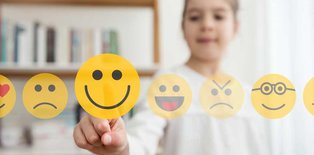Kids and Cannabis: Is Your Child Using Marijuana?

The use of cannabis is on the rise. Now legal in many states, cannabis (also known as marijuana, pot, dope, and weed) is used both medicinally and recreationally. Because it is now so widely accepted, some believe marijuana to be harmless. But nothing could be further from the truth for children and adolescents.
Marijuana use statistics
Marijuana is the most used drug among teens. But it may be surprising to know just how many. According to the National Center for Drug Abuse, among kids ages 12 to 17:
- Nearly 44 percent have tried marijuana in their lifetime; up from 37 percent in 2019.
- 35 percent used marijuana in the last year.
- Almost 7 percent of 12th graders use marijuana daily.
Sadly, we're seeing an increase in kids who are getting exposed to marijuana in eighth, ninth, and tenth grade, and that's way too early. The earlier you use, the more likely it is you'll use more.
How THC impacts the brain
The active ingredient in cannabis is tetrahydrocannabinol, or THC. It is what causes the “high” associated with marijuana. The effects of THC are obtained by smoking the flower from the cannabis plant, vaping a concentrated form, or eating a food that is infused with it. THC impacts the brain by displacing the processes that naturally occurring endocannabinoids are meant to perform.
The brain begins to develop in infancy and that process continues to develop well into your 20s. Using marijuana in any form at an early age means you are potentially disrupting the development of those very precise and careful circuits. Based on research, we are becoming more certain that early marijuana use affects how the brain develops.
Cannabis effects on the brain are wide-reaching.
- The brain’s executive functioning is affected. These skills are needed to help us in daily life and allow us to focus, remember, problem-solve, plan, reason, and control our emotions.
- It affects working memory and reduces one’s ability to remember information and later recall or use it.
- The effects of cannabis linger. If you smoke on a weekend, it affects you for the entire next week, even if you don't smoke again. For those who use marijuana regularly, there is a persistent decline in executive functioning, working memory, and other cognitive areas. We know it interferes with the brain’s circuits. We are not sure that the brain will “snap back” to where it’s supposed to be if you stop using marijuana.
Other health effects of marijuana
In addition to marijuana’s serious impact on the brain, there are additional negative health effects. According to the Centers for Disease Control and Prevention (CDC), they include:
- Addiction. Three in 10 who use marijuana will develop a use disorder, meaning they cannot stop even when it causes health or relationship issues. The earlier you use it for the first time, the greater the risk for addiction.
- Cancer. While marijuana is used to help treat the symptoms of nausea and vomiting from chemotherapy treatment, smoking marijuana or vaping can increase your risk of cancer.
- Heart disease and lung health. Any smoking or vaping is dangerous to the heart and lungs and increases the risk for disease.
- Mental health. The effects of cannabis on mental health can be far-reaching. They range from mild disorientation to temporary psychosis (hallucinations and paranoia), thoughts of suicide, or even long-lasting disorders such as schizophrenia.
- Dangerous driving. The use of cannabis impairs the ability to drive due to slowed reaction time and impaired coordination, which increase the risk of an accident—posing a threat to others as well.
Signs of cannabis use
Parents should be aware of the signs that indicate cannabis use among children and teens. Some common warning signs are:
- Hair or clothes having the pungent smell of marijuana.
- Eyes that are red or bloodshot.
- Delayed reaction time.
- Mood swings.
- Increased laziness or sleepiness.
- Marijuana-related items such as rolling papers, pipes or bowls for smoking, cartridges, vaporizers, or edibles.
- Anxiety or paranoia.
- Increased hunger, often referred to as the “munchies.”
Talking to your teen about marijuana
Whether or not you think your child is using cannabis, it’s important to talk about it. Parents and caregivers should discuss all types of dangerous substances, including nicotine, alcohol, and cannabis, with children as early as elementary school.
We encourage parents to be proactive and talk to their child about marijuana and its dangers. These discussions may help to discourage and prevent marijuana use, or at least delay a first-time experience. In that case, the best outcome would be mid-20s, when the brain’s development is more complete.
As teens get older, they naturally desire more independence. It can become more difficult for parents to intervene in their child’s behavior and choices. But parents should not give up. The dangers of cannabis use far outweigh a tough conversation.
You can learn more about cannabis use among children in this MindCast podcast. If your child is using marijuana or other drugs and needs help, you can turn to the experts at Bradley Hospital.

About the Author:
Jeffrey I. Hunt, MD
Dr. Jeffrey Hunt is director of inpatient and intensive services at Bradley Hospital.
Lifespan Living Newsletter
Is Your Teen Smoking Marijuana?

Listen to the Podcast
With the legalization of marijuana in many states, Dr. Hunt is here to help identify signs that your child may be smoking and what you can do about it.
Find a Doctor

The right provider is in our network
Search more than 1,200 providers in our network.



